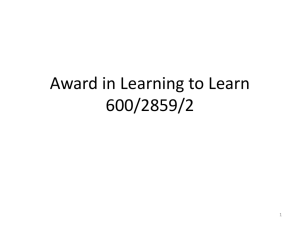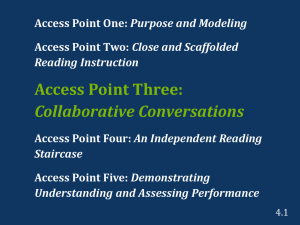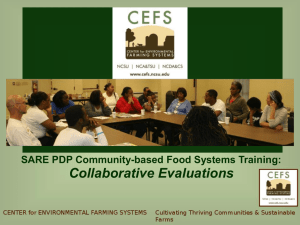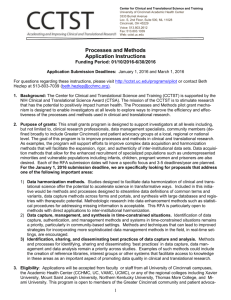Andres Rengifo RV
advertisement
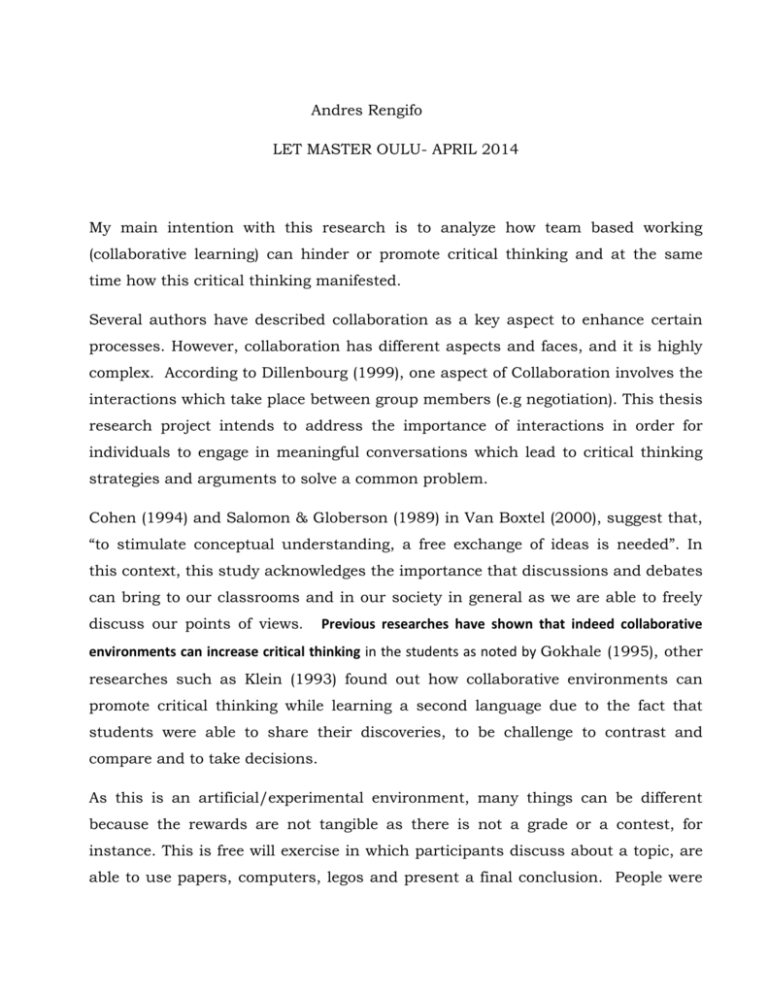
Andres Rengifo LET MASTER OULU- APRIL 2014 My main intention with this research is to analyze how team based working (collaborative learning) can hinder or promote critical thinking and at the same time how this critical thinking manifested. Several authors have described collaboration as a key aspect to enhance certain processes. However, collaboration has different aspects and faces, and it is highly complex. According to Dillenbourg (1999), one aspect of Collaboration involves the interactions which take place between group members (e.g negotiation). This thesis research project intends to address the importance of interactions in order for individuals to engage in meaningful conversations which lead to critical thinking strategies and arguments to solve a common problem. Cohen (1994) and Salomon & Globerson (1989) in Van Boxtel (2000), suggest that, “to stimulate conceptual understanding, a free exchange of ideas is needed”. In this context, this study acknowledges the importance that discussions and debates can bring to our classrooms and in our society in general as we are able to freely discuss our points of views. Previous researches have shown that indeed collaborative environments can increase critical thinking in the students as noted by Gokhale (1995), other researches such as Klein (1993) found out how collaborative environments can promote critical thinking while learning a second language due to the fact that students were able to share their discoveries, to be challenge to contrast and compare and to take decisions. As this is an artificial/experimental environment, many things can be different because the rewards are not tangible as there is not a grade or a contest, for instance. This is free will exercise in which participants discuss about a topic, are able to use papers, computers, legos and present a final conclusion. People were not obliged to participate and they could leave if they wanted; although no one left until the end. Previous researches have shown that indeed collaborative environments can increase critical thinking in the students as noted by Gokhale (1995), other researches such as Klein (1993) found out how collaborative environments can promote critical thinking while learning a second language due to the fact that students were able to share their discoveries, to be challenge to contrast and compare and to take decisions. CRITICAL THINKING As for my research, I will focus more on a sub entry of Collaborative learning, as Collaborative learning can be so broad, for purposes of this research, I have chosen Team based learning: Team based learning can be useful because the teams for this experimental exercise were formed randomly and without any pre conception such as friendly or age background. Fink (2002) declares that “when used appropriately Team Learning has several characteristics such as: Transforming small groups into Teams, transforms a technique into a strategy, it transforms the quality of student learning and for many teachers it transforms (or restores) the joy of teaching”. As for critical thinking which is main purpose of the research I found some reflections: Halpern (1998) Students who have limited critical thinking and problem-solving skills often have problems in applying what they have learned at school to the real world, since the complexity of a real-world environment is usually time-sensitive and contextualized Boss (2010) states that critical thinking requires learning how to think rather than simply what to think, moreover, Boss adds that critical thinking provides us with the tools to identify and resolve issues in our lives. Critical thinking is not simply a matter of asserting our opinions on issues. Ennis (1991) in Zhou (2010) defined critical thinking as “reasonable reflective thinking focused on deciding what to believe or do”. Ennis (2011) states that “critical thinking is reasonable and reflective thinking focused on deciding what to believe or do”. Brookfield (1987) categorizes critical thinking into s three inter-related phases:- 1. Discovering the assumptions that guide our decisions, actions and choices 2. Checking the accuracy of these assumptions by exploring as many different perspectives, viewpoints and sources as possible 3. Taking informed decisions that are based on these researched assumptions It is not easy to measure how individuals engage in critical thinking as it varies from person to person, and from topic to topic Brookfield (1987) admits that the state of critical thinking means that an individual is continually questioning assumptions, considering context, creating and exploring alternatives and engaging in reflective skepticism. Fortunately, there are tests that have been designed to measure the most important characteristics of critical thinking in an individual. Jones . (1995) provides that critical thinking is defined in seven major categories: 1) Interpretation, 2) Analysis, 3)Evaluation, 4)Inference, 5)Presenting Arguments, 6) Reflection, and 7)Dispositions. Within each of these categories are skills and sub-skills that concretely define critical thinking. Another test is the California Critical Thinking Skills Test--College Level (CCTST) The CCTST aims to measure the cognitive skills of interpretation, analysis, evaluation, explanation, and inference, The CCTST is based on the consensus conceptualization of critical thinking (CT) which emerged from a two-yew Delphi research project sponsored by the American Philosophical Association. Facione (1990) summarizes Delphi finding as follows : We understand CT to be purposeful, self-regulatory judgment which results in interpretation, analysis, evaluation, and inference, as well as explanation of the evidential, conceptual, methodological, criterio-logical, or contextual considerations upon which that judgment is based. The panel also admits that critical thinking should be accompanied with a measure of a Critical skills dispositional dimension, as a result . The Delphi panel include these categories to evaluate Critical thinking: 1) Interpretation, 2) analysis, 3) Evaluation , 4) Inference, 5) Explanation and 6). Self-regulation. As it is quite complicated and not so practical to count the actions of turns and participation from each individual because there are also different ways to express their critical thinking (e.g lego, graphics, even a physical shape or body action) can be used to give an opinion and come to terms in the group and reach a conclusion. This paper will intend to address the critical thinking qualities in a more qualitative approach and so there will be characteristics that should be analyzed in order to get a deeper understanding of the turns and processes of interaction within the teams. Critical Thinking Categories Characteristics Understanding of the Identifies the problem, sub-problem and the importance of them. problem Demonstrate clear understanding of the purpose of the task. Development of the task Draws a clear strategy to reach a conclusion, seeks the opinion of others. Uses multiple strategies: Brainstorming, analogies. Evaluation of the Task Gives the corresponding judgment to the different opinions in order to reach a goal. Engages in ideas for further discussion and debate. Presentation of arguments Is able to present the arguments in a clear way and share the different within the group findings and premises. Reflection of Arguments Combines different opinions and information empathetically, Is able to within the group reason with members who disagree. Coming to terms in the Final product shows mastery of creativity and self-confidence, Uses group (final product) different resources available. Any other category that has not been written here will come upon completion of the data transcription as this is more a discovery process of understanding rather than a scientifically explanation of a phenomena to produce intake of quantification and stratification of data. . For this purpose of research, I won’t be able to finish this thesis so it was a great exercise and overall it would be a nice experience to study this phenomena maybe in future years back home or elsewhere. REFERENCES Boss, Judith A. Think: Critical thinking and logic skills for everyday life. McGraw-Hill, 2010 Brookfield, S. D. (1987). Developing critical thinkers. Milton Keynes: Open University Press. Cohen, L. Manion. "L.(1989) Research Methods in Education." New York: Routledge Dillenbourg, P. (1999). What do you mean by collaborative learning?.Collaborativelearning: Cognitive and computational approaches., 1-19. Ennis, R. (2011). Critical Thinking. Inquiry: Critical Thinking across the Disciplines, 26(2), 5-19. Klein, C. E. (1993). More Than a Required Skill in Today's Curriculum: Critical Thinking and Collaborative Learning in Foreign Languages. Mid-Atlantic Journal of Foreign Language Pedagogy, 1, 91-96. Gokhale, A. A. (1995). Collaborative learning enhances critical thinking. Van Boxtel, C., Van der Linden, J., & Kanselaar, G. (2000). Collaborative learning tasks and the elaboration of conceptual knowledge. Learning and instruction, 10(4), 311-330. Zhou, Q., Shen, N., & Tian, H. (2010). Developing critical thinking disposition by task-based learning in chemistry experiment teaching. Procedia Social and Behavioral Sciences, 2, 4561-4570.



